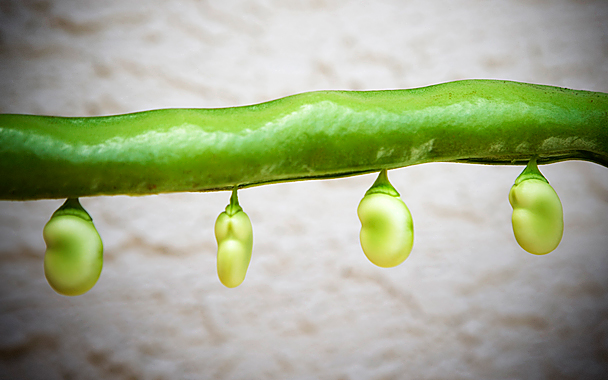If you know what a Sunday pot of “gravy” is, and you know the pleasures of cooking one, you’ll understand what drives my Italian-American friends Stephen Nocera and Gina Marie Miraglia Eriquez to plant lots and lots of paste tomatoes in their respective gardens—they’re the key to a hearty red sauce. I’m more in the Popeye school of growing: Give me spinach, lots of spinach, and kale and collards. The point is, plan your garden around what you’re passionate about, what sparks your imagination as a cook—whether it’s lemongrass or daikon or good old Italian basil—and what works in your part of the country. (In the coming weeks we’ll talk about gardening aimed at various cuisines, with advice from our food editors about what they’ve tried and loved.)
As the season begins, Stephen and I figure out where our garden paths cross. We both love salads, so this week in the community garden, after snipping some chives that were going strong from last year’s planting and working additional fertilizer into the soil, we put in seeds for peas, mâche, watercress, spinach, and mesclun (which is composed of equal parts arugula, cress, endive, radicchio, and green, oak-leaf, and red lettuces). Greens can take the low temperatures of the season that other plants can’t.
Early spring in the Northeast is also the time to put in fava beans, the good-luck charm of Sicilians. (See Robert Pincus’s cook’s-eye view of this buttery, nutty legume.) Stephen and I are germinating fava beans in a small mound of compost in order to break down the tough seed cover and allow the bean to absorb more nutrients than it would if planted directly into the soil. When the seeds germinate, we’ll put them in the earth and let them climb up a trellis that Stephen fashioned from an old dressing screen. (In our community garden I’ve seen beans and peas making their way skyward on an assortment of odd cast-offs, including a rickety ironing board.)
Stephen has been fixated on growing a Sicilian squash—technically an edible gourd—called cucuzza, which is similar to a zucchini, but longer and pale green. According to those who love it, it also has a much more complex flavor. So when we laid our trowels down for the day and chatted up one of our garden neighbors, Frank, who also happens to be of southern Italian descent, and he told us he’d started some cucuzza plants at home (and would give us a couple), Stephen’s eyes almost got misty. He’s already envisioning a pasta with cucuzzi e fave.
While my friend is summoning the spirit of his ancestors from Agrigento, I’m trying to figure out where in my minuscule cottage I’m going to squeeze a flat of seeds that just can’t withstand the still-cold spring soil temperatures. Whether you start your garden from seeds or plants is completely personal. It’s less expensive, naturally, to take it from square one, with seeds, and I get cheap thrills from watching the greens pop up in our soil. But—and it’s a big but—some vegetables (like the eggplant that I could eat morning, noon, and night) should be germinating in a fairly warm place now, and unless you have a lot of space to devote to them, you’re better off with plants grown by a greenhouse you trust. (You can also build a cold frame for this purpose. Four-season gardeners Eliot Coleman and Barbara Damrosch are a good source of written advice, and there’s an easy-to-follow how-to piece in Mother Earth News. It’s crazy, but I just can’t resist starting at home the hardy lavender Pingtungs and mini Fairy Tales that, according to my seed supplier, will be beautifully striped in purple and white and have “no bitterness.” If Stephen is dreaming of favas and Sicilian squash, I’m already tasting eggplant rollatini . . . with a side of sautéed spinach.
Seed Sources
These seed suppliers (a few of my favorites) offer garden classics as well as a good selection of heirloom plant varieties. Or check with your local greenhouse; some sell seeds from local breeds.
Johnny’s Selected Seeds: johnnyseeds.com
Seed Savers is a nonprofit member-supported organization that specializes in heirloom plants: seedsavers.org
Seeds of Change: Certified organic seeds at seedsofchange.com
The Cook’s Garden: cooksgarden.com



 Pinterest
Pinterest


